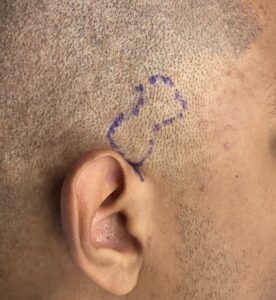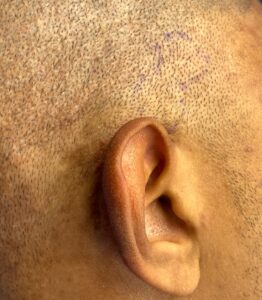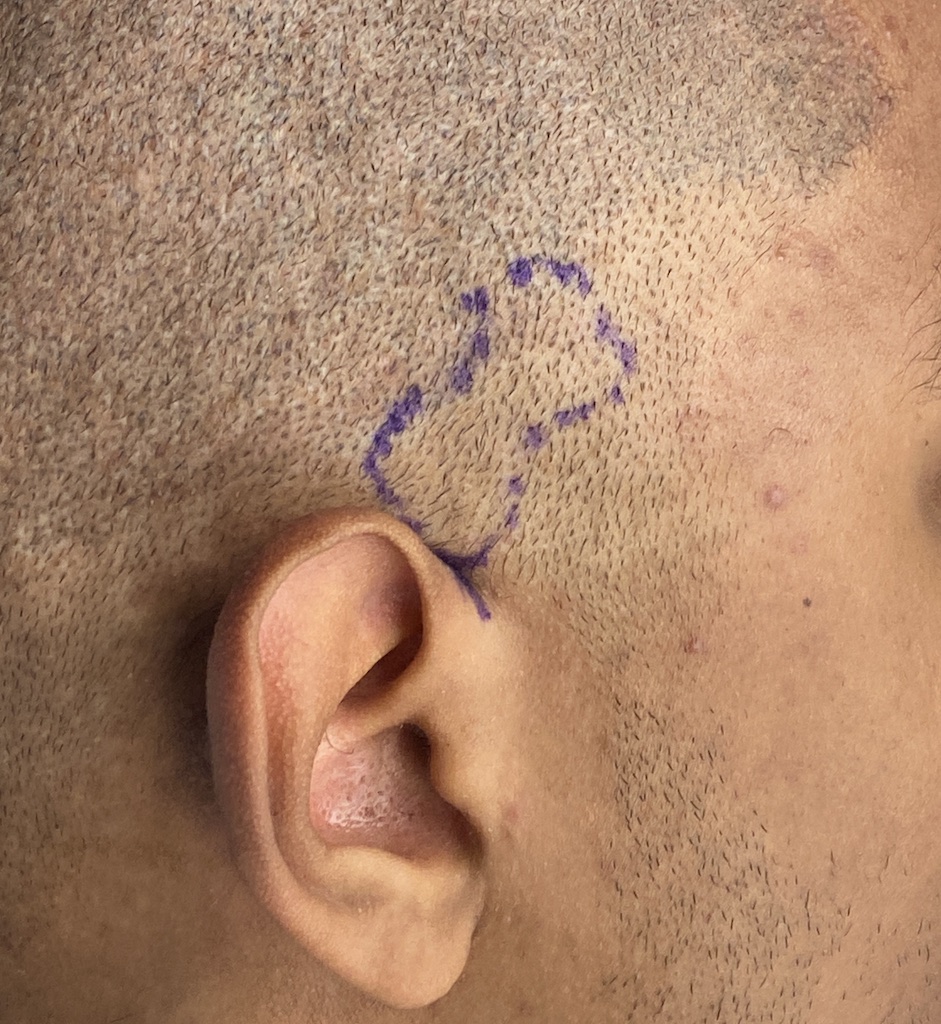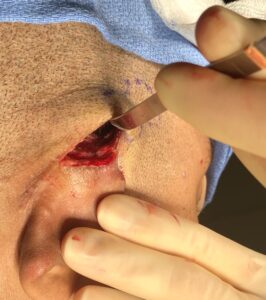Temporal reduction is an effective aesthetic procedure for reshaping the side of the head in the properly selected patient. Based on temporal muscle removals and releases the goal is to decrease the wide or convex shape to the side of the head. Its effectiveness is based on how thick the temporal muscle is but in most overly convex head shapes there is enough muscle to make a visible difference with its removal.
In removing part or the posterior part of the temporal muscle the surgical approach is from behind the ear in the postauricular sulcus. This leaves no visible scar and allows reasonable visual access to most of the muscle. By making a cut line from the top of the ear up to the temporal line of the forehead all temporal muscle behind that line can be removed. This leaves a cut line along the posterior edge of the larger remaining anterior temporal muscle. Right after surgery this leaves a palpable line at the blunt edge of the muscle cut. In rare cases in the shaved head male this oblique line may even be slightly visible.
Over time this cut edge of the muscle will atrophy and become more feather edged. Muscle is not like bone in which a blunt edge may persist. It is a more dynamic tissue where the cut muscle fibers, that no longer have a proximal attachment, will retract and atrophy leaving only those deeper fibers next to the bone to remain.


temporal artery pulsations in secondary cut line reductions Dr Barry EppleyOne does have to be careful as running right in front of this area is the main trunk of the superficial temporal artery. Its pulsations can be easily seen. Even though the artery runs above the fascia it is very close nonetheless.
Dr. Barry Eppley
World-Renowned Plastic Surgeon




